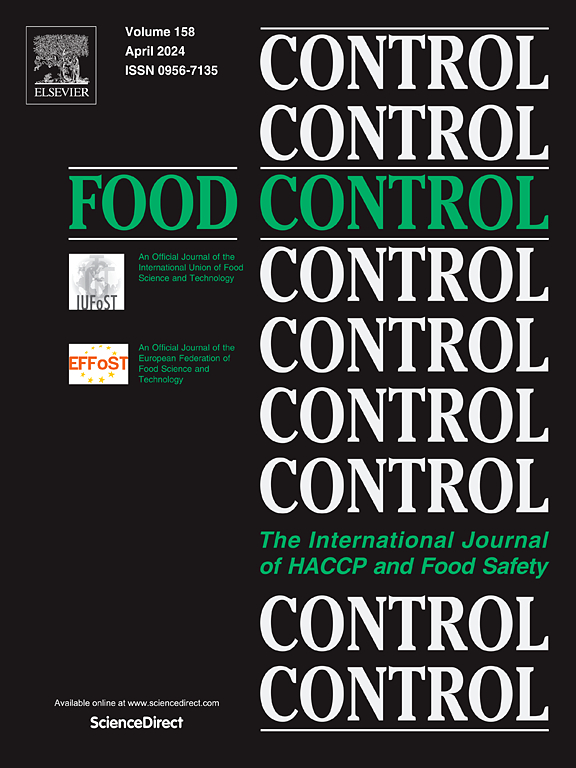Green and sustainable techniques for mycotoxin decontamination in rice: Microwave and UV technology
IF 5.6
1区 农林科学
Q1 FOOD SCIENCE & TECHNOLOGY
引用次数: 0
Abstract
Mycotoxin is the secondary metabolites of fungi which can contaminate rice at any stage of processing. Mycotoxin contamination of rice has significant economic and public health implications, compromises food safety and reduces food quality. Consequently, there is an increasing demand for the development of effective decontamination techniques. This study explores the effect of microwave (MW) and ultraviolet (UV) treatments on the degradation of mycotoxin in rice. This study investigated the effect of microwave (MW) and ultraviolet (UV) on the AFT, AFB1 and OTA levels in rice. Rice was artificially contaminated with AFT (50 ng/g), AFB1 (50 ng/g) and OTA (20 ng/g) and treated with MW (at 560 W, 640 W, and 720 W for 120 s and 360 s) and UV technology (at 15 mW/cm2 UV intensity for 0.5, 1, 2, 3 and 4 h). AFT, AFB1 and OTA were analysed by HPLC-FLD. The results showed that the highest MW treatment (720 W, 360 s) reduced the AFT, AFB1, and OTA by 40.00, 49.31, and 73.39 %, respectively, in rice. However, the lowest MW power and treatment time (560 W, 120 s) showed significant reductions of AFT (33.40 %), AFB1 (50.06 %), and OTA (75.24 %) in rice. UV treatment significantly lowered mycotoxin content, with optimal reductions observed after varying exposure times depending on the specific toxin. The highest reduction in AFT (31.09 %), AFB1 (44.33 %), and OTA (59.96 %) were observed after 0.5 h, 4 h, and 2 h UV exposure, respectively. These results demonstrate the potential of microwave and UV treatments to achieve significant mycotoxin reduction. These findings support the integration of sustainable decontamination technologies in rice processing, contributing to food safety and sustainability in the agri-food sector.

求助全文
约1分钟内获得全文
求助全文
来源期刊

Food Control
工程技术-食品科技
CiteScore
12.20
自引率
6.70%
发文量
758
审稿时长
33 days
期刊介绍:
Food Control is an international journal that provides essential information for those involved in food safety and process control.
Food Control covers the below areas that relate to food process control or to food safety of human foods:
• Microbial food safety and antimicrobial systems
• Mycotoxins
• Hazard analysis, HACCP and food safety objectives
• Risk assessment, including microbial and chemical hazards
• Quality assurance
• Good manufacturing practices
• Food process systems design and control
• Food Packaging technology and materials in contact with foods
• Rapid methods of analysis and detection, including sensor technology
• Codes of practice, legislation and international harmonization
• Consumer issues
• Education, training and research needs.
The scope of Food Control is comprehensive and includes original research papers, authoritative reviews, short communications, comment articles that report on new developments in food control, and position papers.
 求助内容:
求助内容: 应助结果提醒方式:
应助结果提醒方式:


